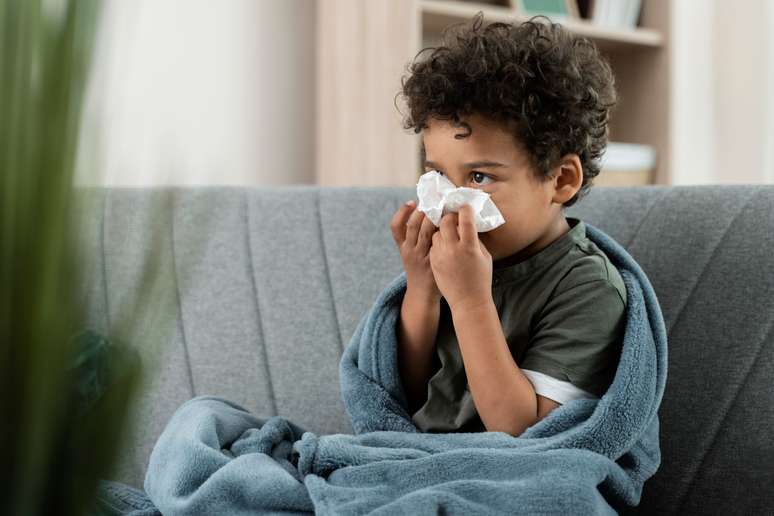Find out how to reduce discomfort in your little ones’ breathing and find out what the colors of phlegm can indicate
At any time of the year, but especially in the colder months, the catarrh It is one of the biggest problems of young children. A recurring problem that requires constant attention, excess mucus always raises many questions: after all, why does it appear? And how do you know if it’s a real problem? be eliminated?
Phlegm is nothing more than the accumulation of mucus or nasal secretions. It is part of the body’s defense process against infectious agents coming from the air or other irritants, such as pollen and smoke. The abnormal production of mucus seeks its own protect respiratory structures of any external contaminant.
But, despite having a primary function, phlegm can become annoying, as it can obstruct the airways and make breathing difficult. Its color can also help identify if there are more serious health problems. Therefore, it is important to know what the changes might mean.
Green, yellow, brown phlegm? What does the color of mucus mean?
First of all, it is good to be clear: the color of the phlegm is a good indicator of what may be causing the child’s problems, but it is not infallible. Never do self-diagnosis: All color changes should be evaluated by a doctor, who will analyze the discharge along with other symptoms, as well as request further testing when deemed necessary.
As far as color is concerned, the different manifestations of catarrh are usually the following:
- Clear or white phlegm: This is the most common form and can occur without more serious problems. When you notice an increase in clear mucus, it is usually a sign of mild inflammation, such as allergies or a cold.
- Green or yellow phlegm: They are different stages of the same problem, indicating a greater concentration of the body’s defense cells. This color is usually a sign of an infection (usually bacterial), but does not guarantee that this is the case – only a doctor can confirm the suspicion.
- Brown (or dark) phlegm: dark discharge is generally associated with air pollution, smoke or other agents. The way to reduce this problem is to stop exposure to contaminated air if possible. It is a more common situation when, for example, the child frequents the same environment where people smoke.
- Bleeding phlegm: It is a clear sign that there is bleeding somewhere in the respiratory system. It could be something simpler, like an injury to the nostril, or a serious condition where the blood is coming from the lungs. Don’t delay and always consult a doctor for an evaluation!
How to eliminate phlegm in children?
A nasal wash It is the main method to prevent the accumulation of mucus in the upper airways, also important for reducing the predisposition to developing sinusitis. In newborns, it should be carried out with warm saline solution and using a small syringe (without needle), alternating nostrils.
A good wash can help resolve the simplest cases, in which there is no infection or bleeding. However, in case of any change in the color of the mucus – when it is no longer transparent or whitish – it is important to consult a pediatrician.
Based on symptoms and other tests, your doctor may prescribe antibiotics to treat infections or identify the reason for bleeding in the discharge. He or she may also order lung imaging tests to see if there is a risk of a more serious problem.
Maintain hydration It is essential to prevent the accumulation of phlegm in the lungs and obstruction of the airways. In babies, the way to do this is to insist on breastfeeding. Do not use syrups or expectorants without your doctor’s advice, as not all substances in these products may be suitable for your age group.
Source: Terra
Ben Stock is a lifestyle journalist and author at Gossipify. He writes about topics such as health, wellness, travel, food and home decor. He provides practical advice and inspiration to improve well-being, keeps readers up to date with latest lifestyle news and trends, known for his engaging writing style, in-depth analysis and unique perspectives.








